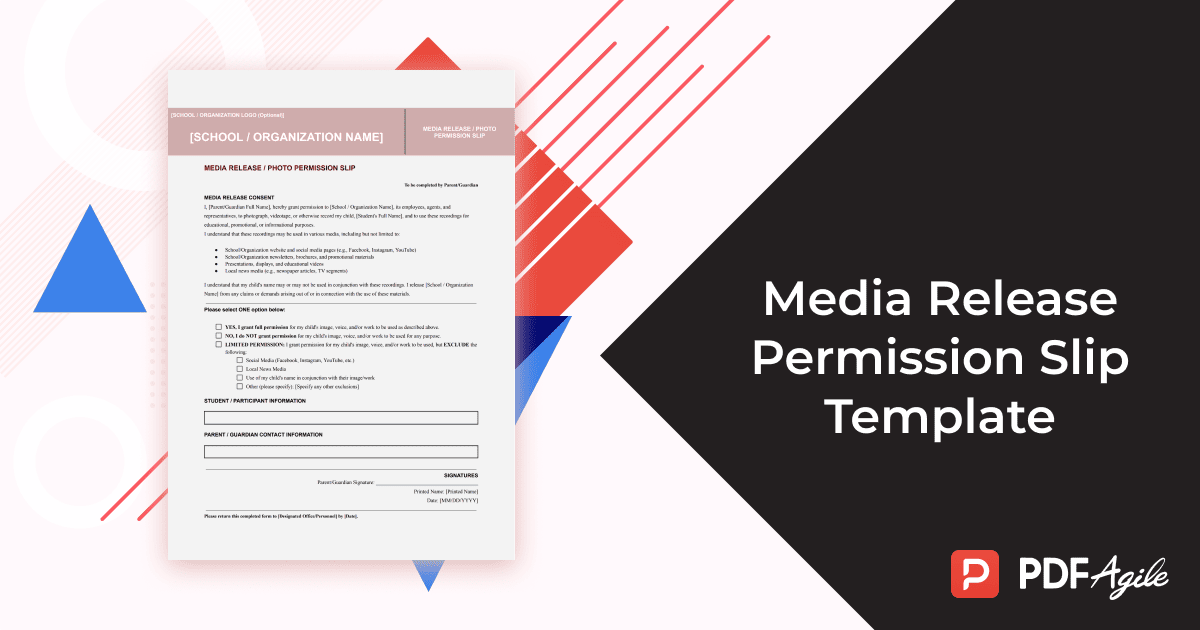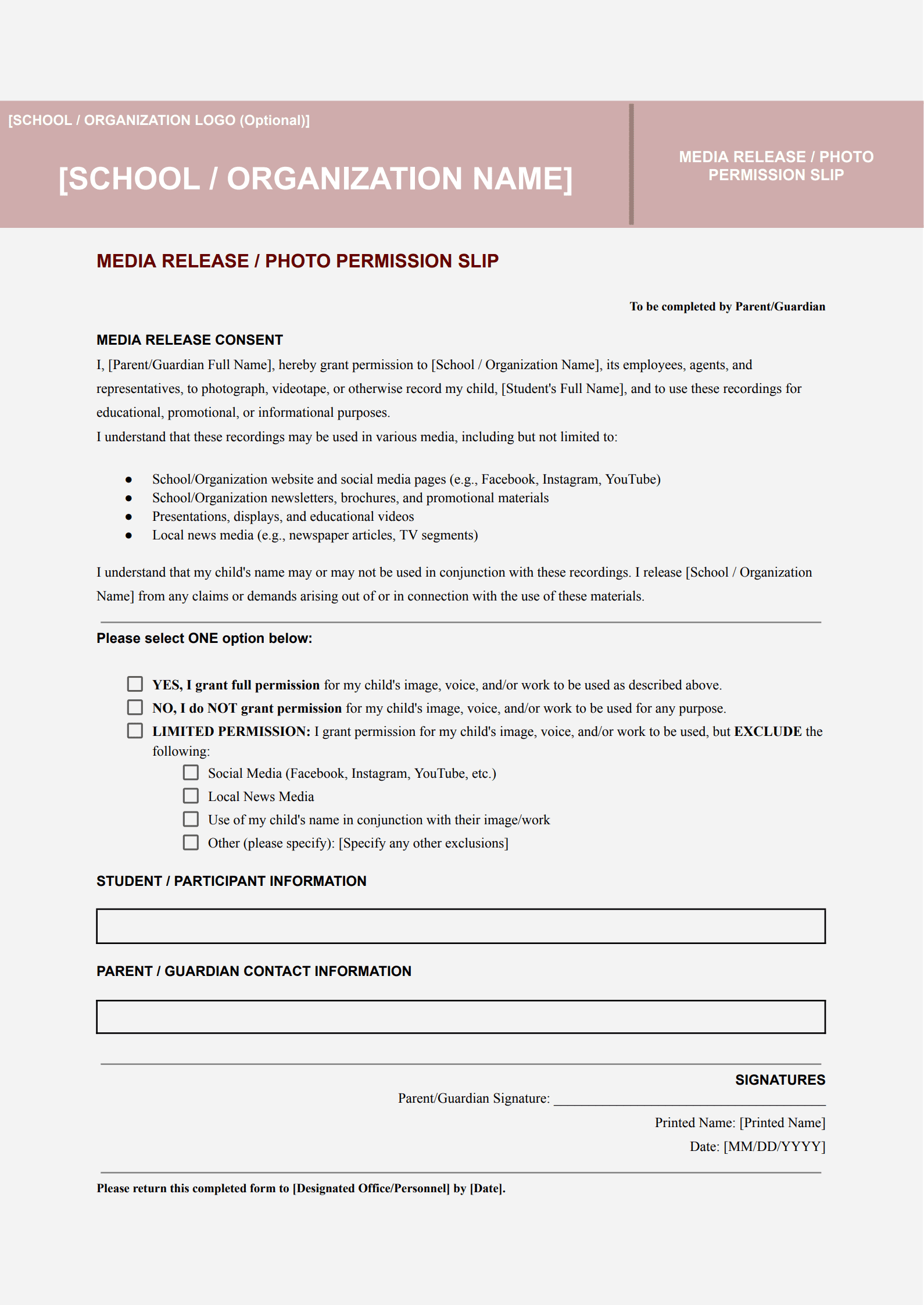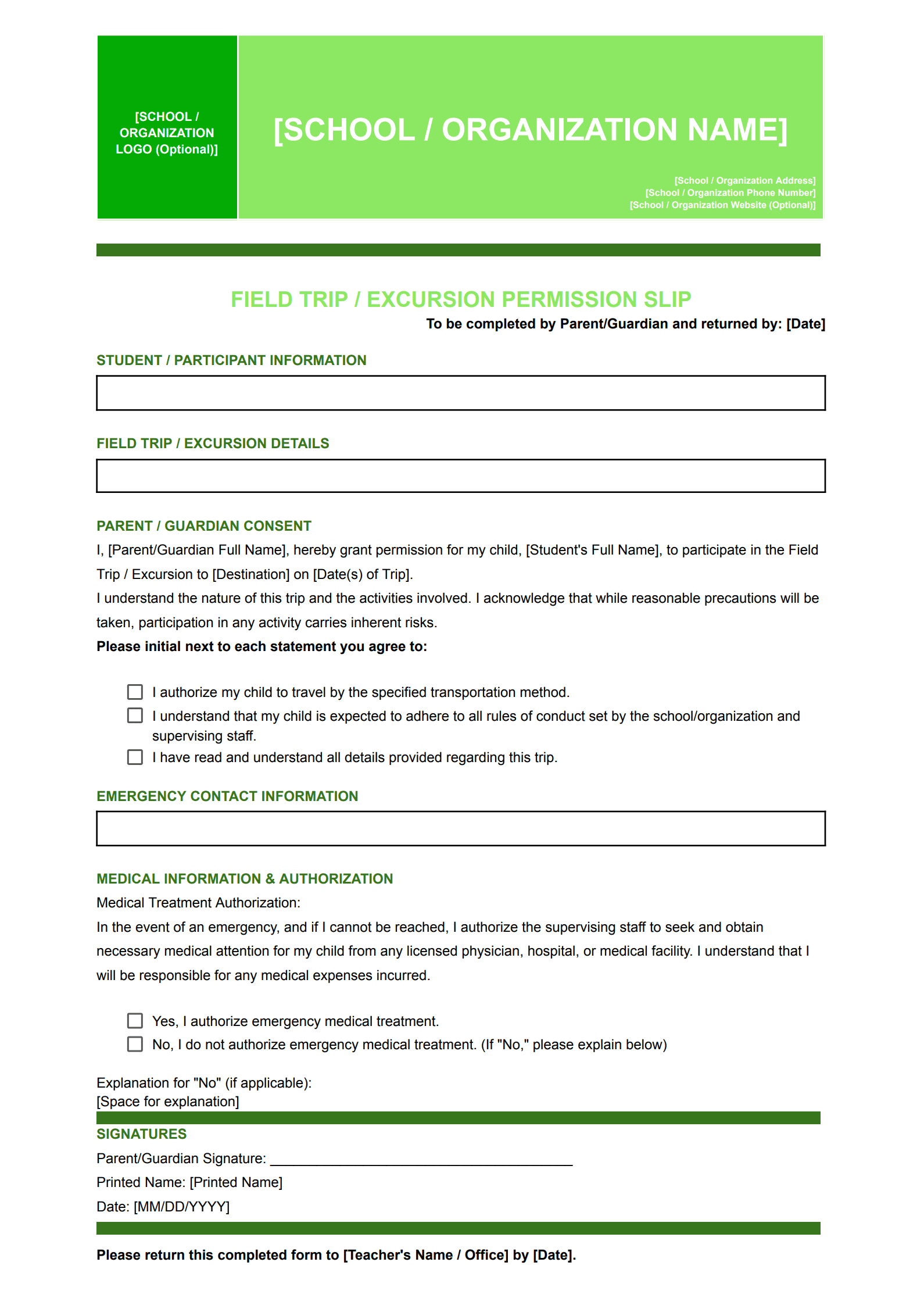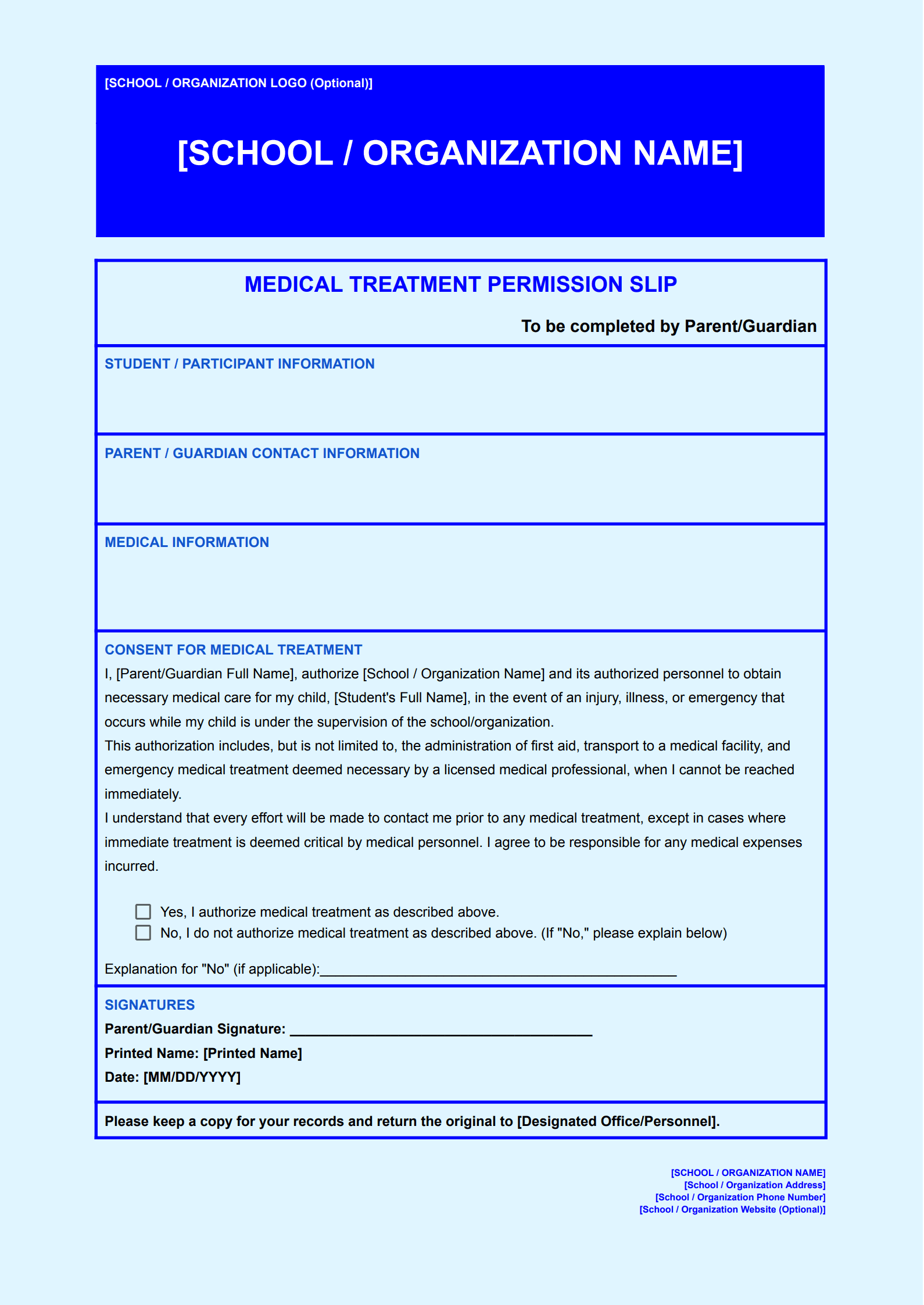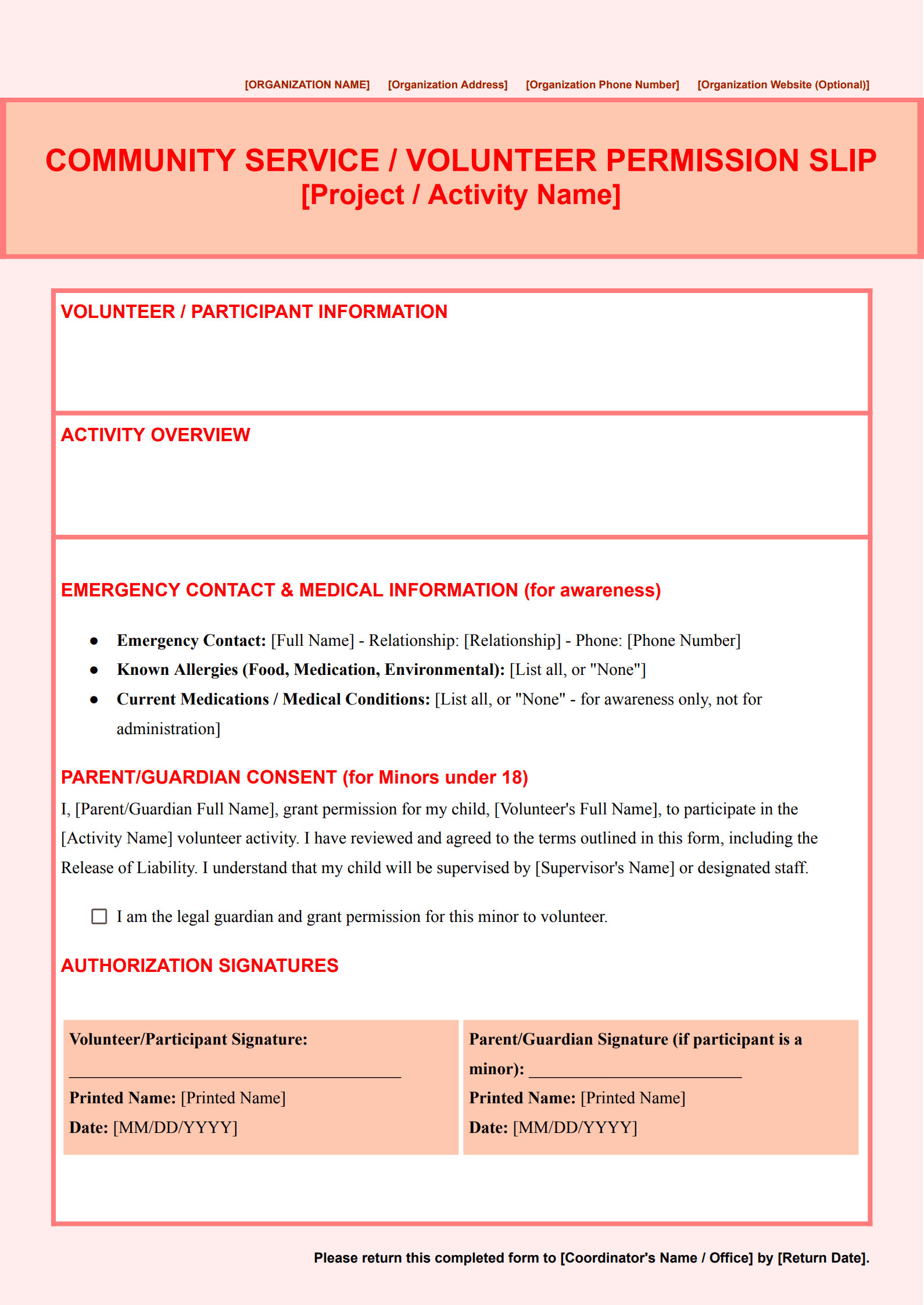In today's visually driven world, capturing moments – whether for school yearbooks, camp promotional videos, or community outreach on social media – is commonplace. However, using someone's image, voice, or creative work requires explicit consent. This is where a Media Release Permission Slip becomes an indispensable tool. It's more than just a form; it's a bridge of trust and transparency between an individual (or their guardian) and an organization, ensuring that media content is used ethically and legally.
What is a Media Release Permission Slip?
A Media Release Permission Slip is a formal, legally binding document used by organizations (such as schools, clubs, non-profits, or event organizers) to obtain authorization from an individual, or their parent/guardian if they are a minor, to use their likeness, voice, or creative works in various forms of media. This consent is crucial for using photographs, video recordings, audio recordings, or even written/artistic submissions for purposes such as: Promotional Materials like brochures, Educational Content for online learning platforms, Archival or Memory like yearbooks and event photo albums.
The slip typically outlines the types of media that may be used (e.g., photos, video), where the media might appear (e.g., website, social media, print), and often includes clauses about the individual's name being used (or not) alongside their image. It provides both legal protection for the organization and assurance for the individual that their image will be used appropriately.
What're the Differences between Media Release Permission Slip and Related Documents
While media release forms broadly deal with consent for media usage, it's important to understand the specific nature of a Media Release Permission Slip in contrast to other similar documents:
Compared to Model Release Form: While functionally similar, a "Model Release Form" is typically used in a professional, commercial photography or videography context. It often involves payment to the model, broader commercial usage rights (e.g., product advertising, stock photography), and more extensive legal language surrounding intellectual property and endorsement. A Media Release Permission Slip, conversely, is usually for non-commercial, non-compensated use by an educational or non-profit organization, for specific educational or promotional purposes directly related to the organization's mission.
Compared to Copyright Release Form: A Copyright Release Form deals with the transfer or permission to use intellectual property (like a piece of writing, music, or art created by the individual). While a Media Release Permission Slip might include permission to use a student's artwork in conjunction with their image, its primary focus is the likeness or performance of an individual, not the underlying intellectual property rights of their creation.
Immersing in the Occasion: A Real Example
Imagine you're at your child's elementary school, attending the annual Spring Concert. The lights dim, the stage is set, and your little one, Chloe, is about to sing her heart out with her class. You see the principal with a camera, snapping photos for the yearbook, and a parent volunteer filming for the school's website. You recall signing the Media Release / Photo Permission Slip at the beginning of the school year. As you watch Chloe proudly perform, you picture her beaming face in the school newsletter, or a clip of her singing appearing in a future school promo video. That signed form means her joy can be shared, celebrated, and help showcase the vibrant spirit of her school, all with your full knowledge and permission.
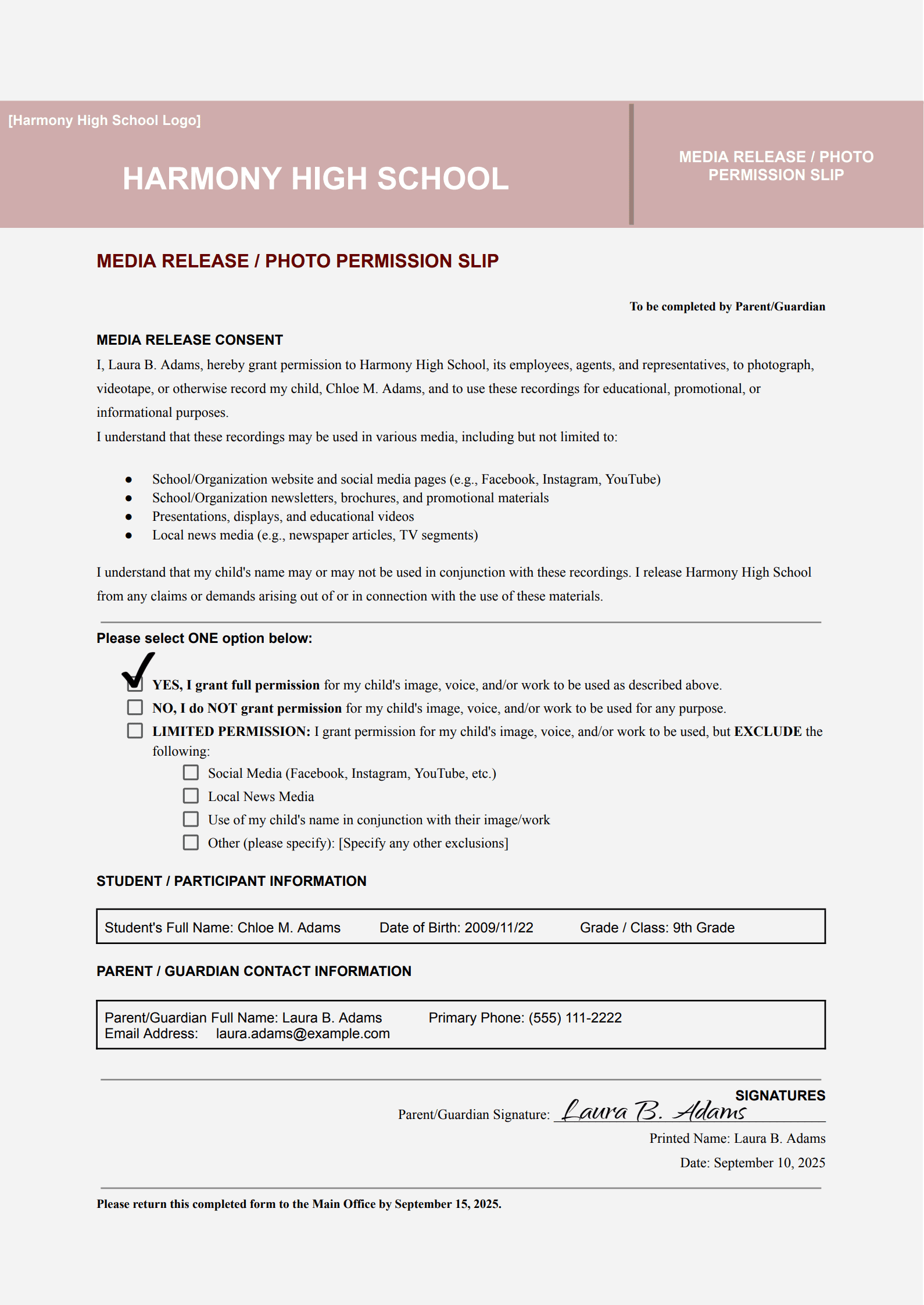
FAQs about Media Release Permission Slip
Q1: What types of media are covered by this permission slip?
A1: Typically, it covers photographs, video recordings, and audio recordings. Some forms might also include permission to use written work or artwork created by the individual if it's featured alongside their image. Always read the specific form to understand its scope.
Q2: What are common uses for the media collected?
A2: Common uses include school yearbooks, newsletters, websites, social media pages (Facebook, Instagram, YouTube), promotional brochures, school presentations, and sometimes local news coverage related to school events.
Q3: Can I choose not to have my child's image used?
A3: Yes, reputable organizations will provide an option to "opt-out" entirely or grant "limited permission" (e.g., no social media, no name associated with photos). It's crucial for the organization to respect your choice.
Free Download: Your Customizable Media Release Permission Slip Template
Need a quick and easy way to create a Media Release Permission Slip Template? Download our free, customizable templates by clicking the Use Template button on this page. Simply add your specific information and print them out.
